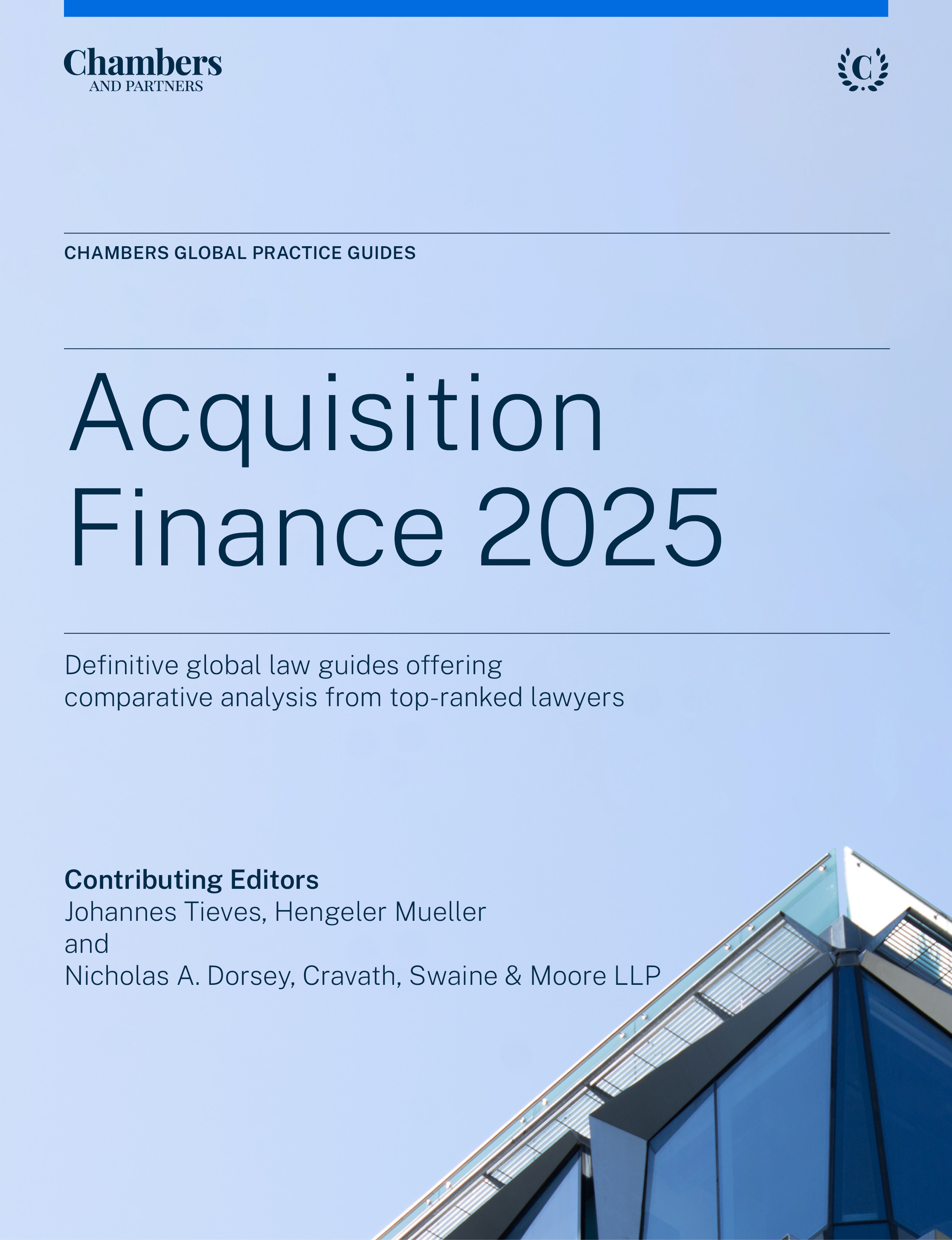
Acquisition Finance 2025
The Acquisition Finance 2025 guide features close to 30 jurisdictions. The guide provides the latest legal information on leveraged buyouts, mezzanine/payment-in-kind loans, bridge loans, high-yield bonds, intercreditor agreements, security, guarantees, lender liability, tax issues and takeover finance.
Last Updated: May 21, 2025
Compare law and practice by selecting locations and topic(s)
Select Locations

Select Topic(s)

Please select at least one location and one topic to use the compare functionality.
Acquisition Finance 2025 Overview
Cravath, Swaine & Moore LLP and Hengeler Mueller are delighted to combine our worldwide working experience in acquisition finance to act as contributing editors for this 2025 edition.
Like prior editions, this guide aims to provide a valuable first resource on the key aspects of acquisition finance in countries throughout the world. We hope that this guide will help readers to gain a quick, initial understanding of the opportunities and pitfalls that may come with different forms of cross-border financings in the covered jurisdictions, including taking collateral in foreign jurisdictions.
In 2024, global M&A activity totalled USD3.2 trillion, an increase of approximately 10% compared to 2023. There were approximately 50,000 deals announced in 2024, a decline of approximately 14% compared to 2023. The fourth quarter of 2024 marked the tenth consecutive quarter to fall below USD1.0 trillion in announced M&A deal volume.
Private equity M&A is an important driver of acquisition finance activity. Private equity buyouts reached USD706 billion globally in 2024, representing a year-over-year increase of 24%. However, the number of private equity-backed M&A deals fell by about 32% over the same period, with the result that many private equity M&A and acquisition finance lawyers found themselves working on fewer transactions, albeit at larger purchase prices.
Factors contributing to the relatively subdued acquisition finance market in 2024 included: i) geopolitical instability; ii) the US presidential election cycle; iii) moderately high interest rates; iv) inflationary pressures; and iv) volatile market movements.
As in prior years, we would like to thank our esteemed colleagues for sharing their knowledge and market intelligence, gained from countless transactions. We share the belief that a seamless product can be best delivered to the reader by a group of first-class law firms with strong working relationships across the world and deep roots in the legal, commercial and political systems of their home countries.
Together with the publisher and the other authors, we hope that this book will assist anyone involved in acquisition finance to understand the key legal aspects of the relevant jurisdictions. We hope to receive suggestions and feedback from readers to make this publication an even better companion.

